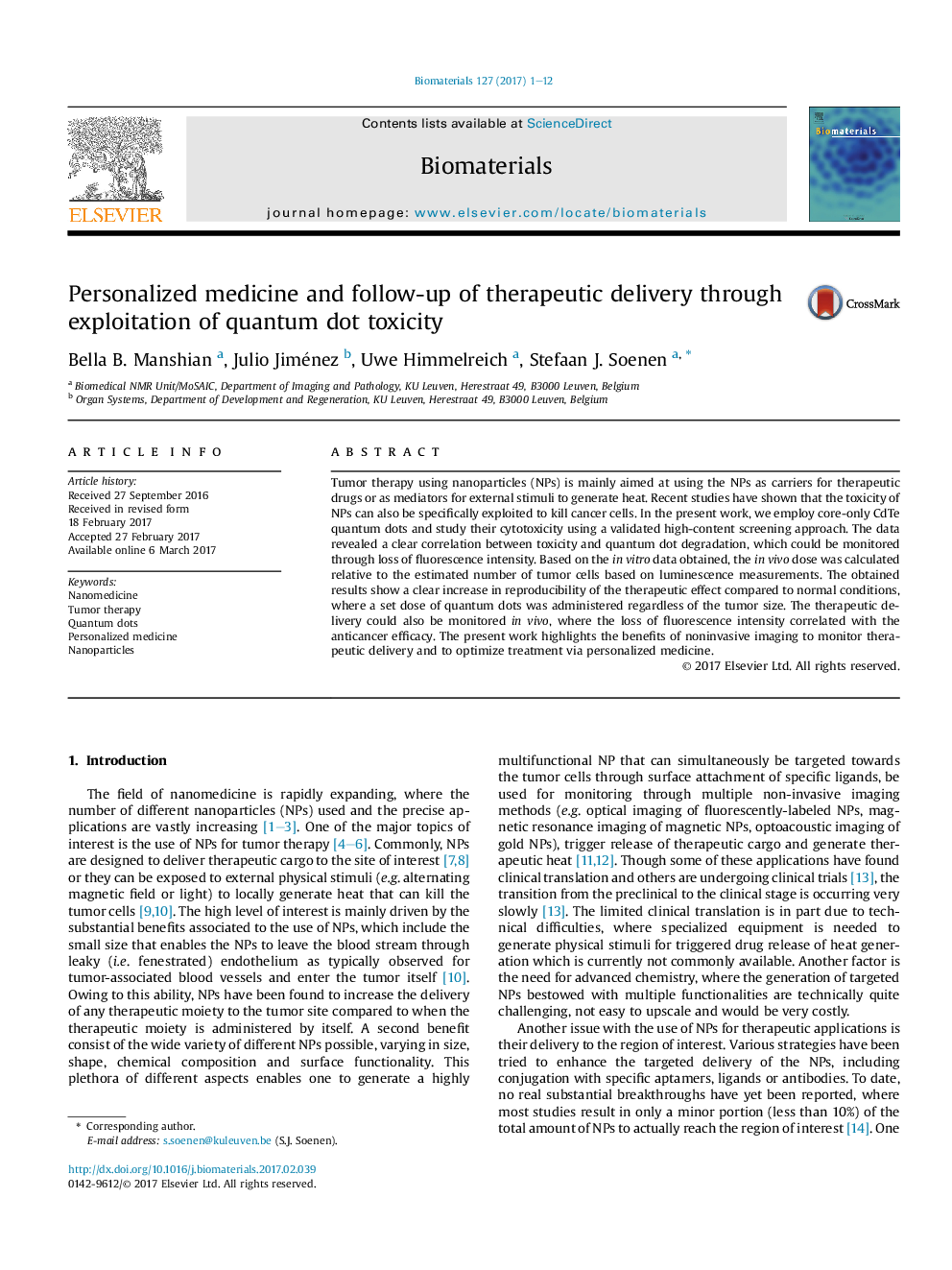| Article ID | Journal | Published Year | Pages | File Type |
|---|---|---|---|---|
| 4752420 | Biomaterials | 2017 | 12 Pages |
Tumor therapy using nanoparticles (NPs) is mainly aimed at using the NPs as carriers for therapeutic drugs or as mediators for external stimuli to generate heat. Recent studies have shown that the toxicity of NPs can also be specifically exploited to kill cancer cells. In the present work, we employ core-only CdTe quantum dots and study their cytotoxicity using a validated high-content screening approach. The data revealed a clear correlation between toxicity and quantum dot degradation, which could be monitored through loss of fluorescence intensity. Based on the in vitro data obtained, the in vivo dose was calculated relative to the estimated number of tumor cells based on luminescence measurements. The obtained results show a clear increase in reproducibility of the therapeutic effect compared to normal conditions, where a set dose of quantum dots was administered regardless of the tumor size. The therapeutic delivery could also be monitored in vivo, where the loss of fluorescence intensity correlated with the anticancer efficacy. The present work highlights the benefits of noninvasive imaging to monitor therapeutic delivery and to optimize treatment via personalized medicine.
